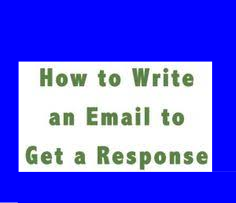5 Tips for Better Business Emails

5 Tips for Better Business Emails
How to write emails that get a response.
1. Create a subject line that helps readers:
The subject line of an email should make its purpose clear to the reader. If action is required by a certain date, the action – answer needed, follow up with third party required – should be included together with the timescale. For example: Budget Response needed by Tuesday or Pre-Reading for Management Team Meeting, March 4. This will help readers to give the required information, or perform the required action.
The second way to help readers is to ensure emails can be easily filed and retrieved. An email with a heading like: Minutes of Finance Meeting, April 8 will be much easier to process, file and retrieve than one which says Yesterday’s Minutes, for example.
2. Only include people who need to take action:
An email should be addressed to the person who needs to take action, or who has requested information from the writer. They should know why they are receiving an email.
CC is not the same as CYA – CC is for people who need to be kept informed to perform their part of the task but who are not required to contribute at this stage.
BCC is for when information is to be shared with a large list of people and to show all the names would violate privacy (e.g. in the case of an email newsletter) and/or when the list would cause a distraction – especially to those viewing on pdas.
3. Make the greeting businesslike:
Email language is generally informal, but in a business setting it should not be sloppy. Dear X sounds rather old fashioned, although it is technically correct. The more usual address would be to simply use the recipient’s name. When responding to an email, follow the pattern set by the sender. If she hasn’t included a greeting, use her name.
4. Write direct and useful content:
Email content should be simple, brief and clear about its purpose. If a long email is necessary, it should be divided into sections with subheadings to help the reader work through it.
5. Sign off professionally:
Email signatures should always show full contact information including a job title, street address, phone number and web site. This saves the recipient time if they need to contact or call the sender and looks more professional than simply signing a name.
Following these tips should ensure professional, easy to understand emails which get results and help readers to tackle information overload
